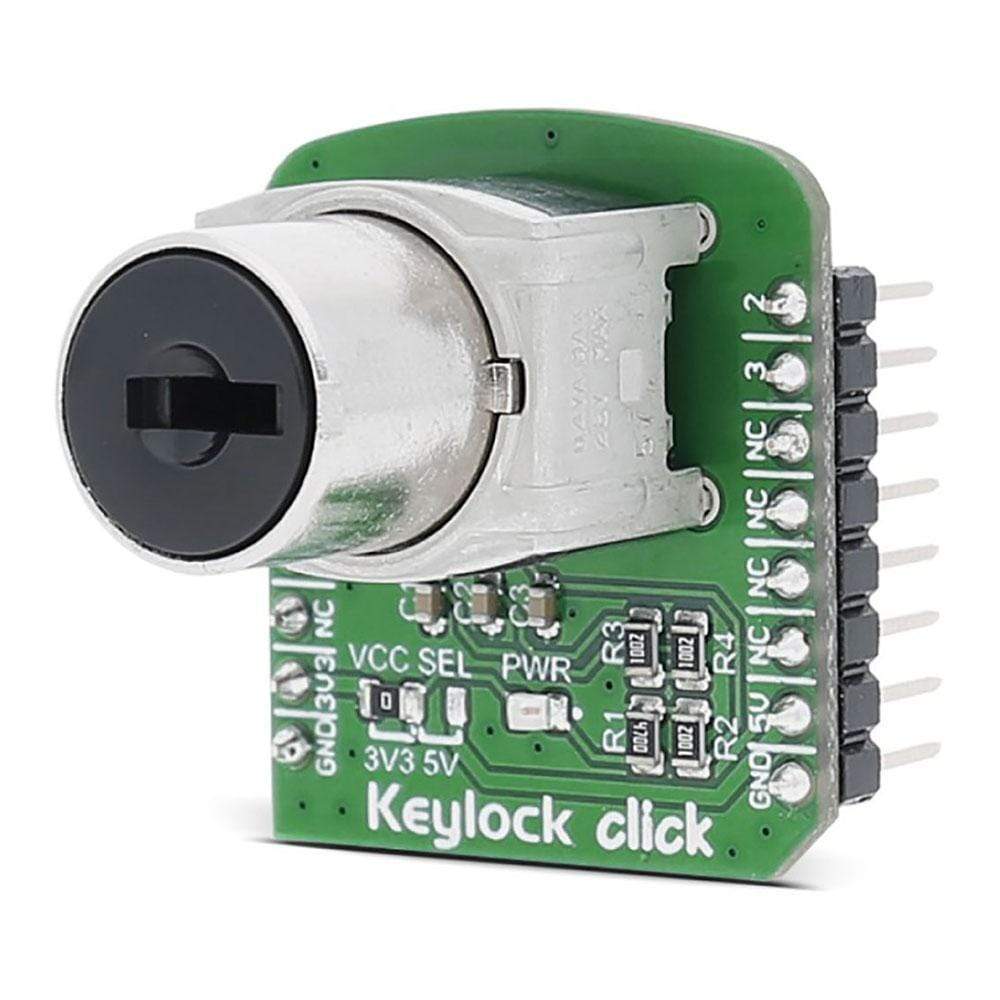
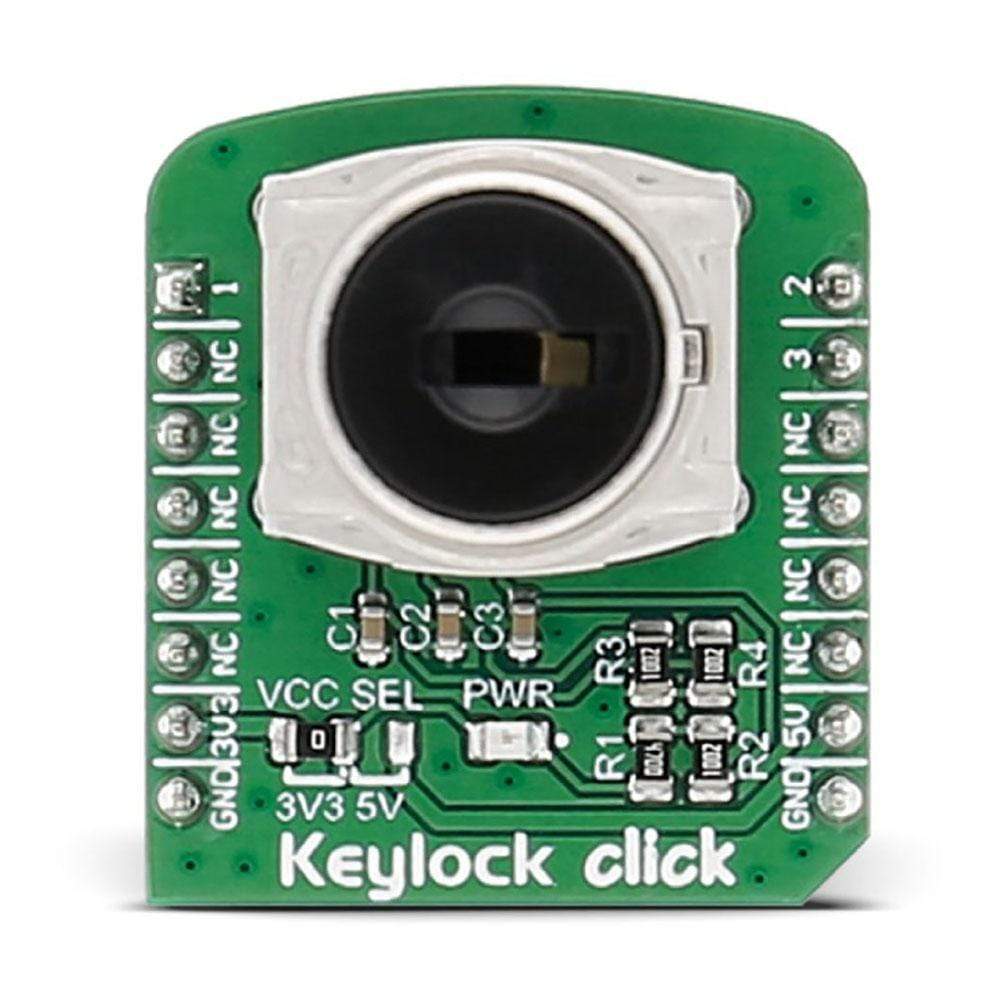
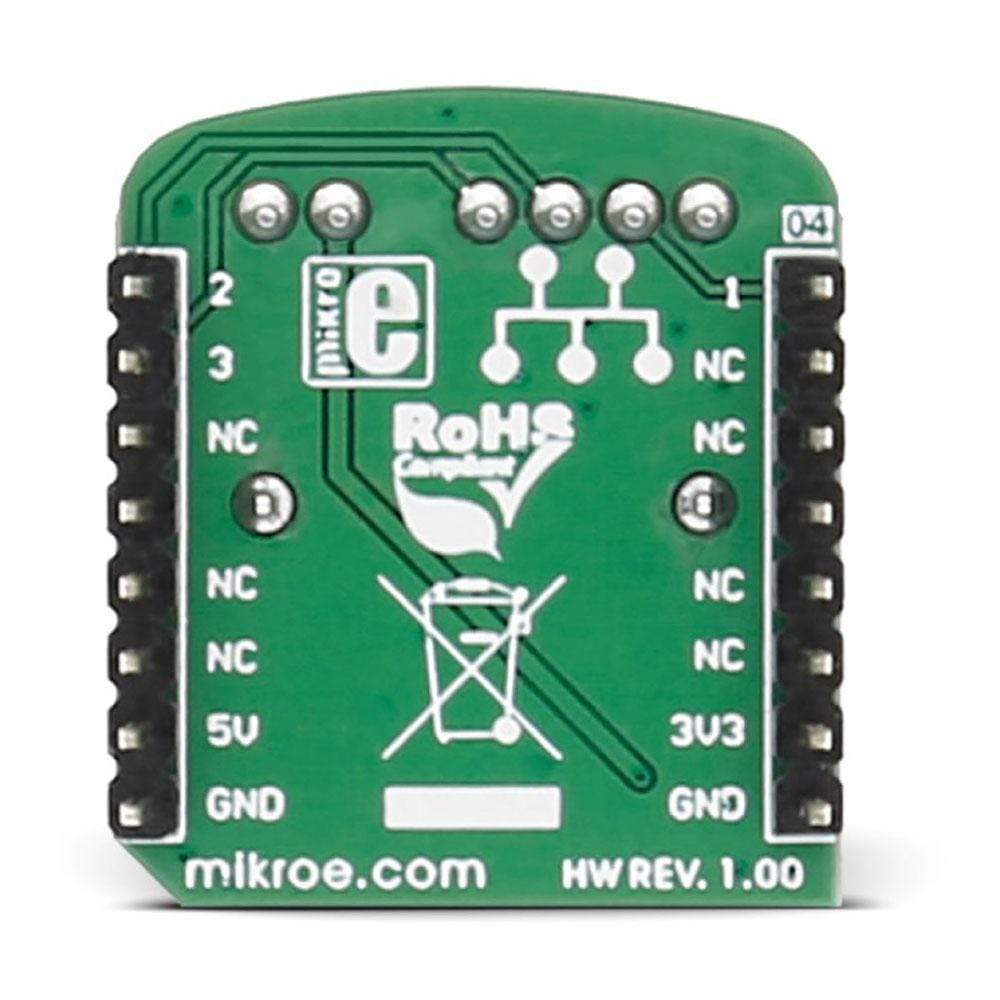
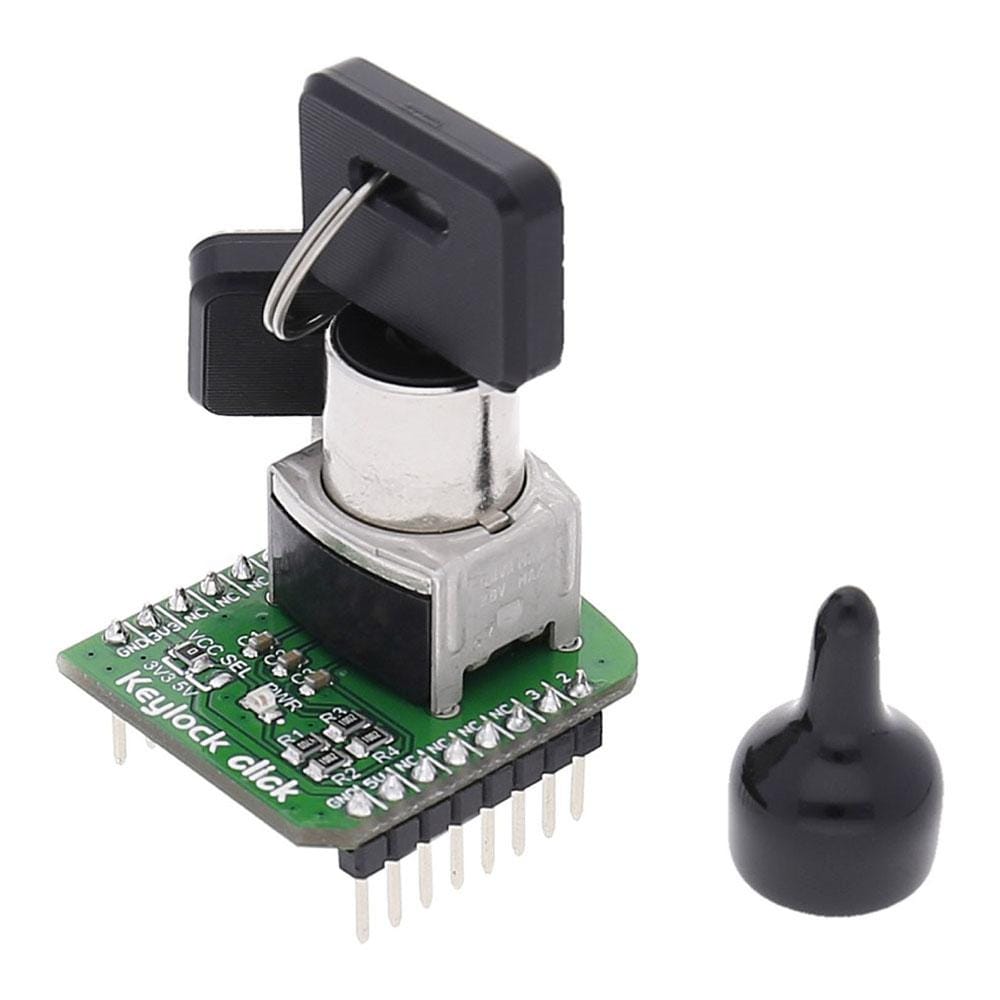
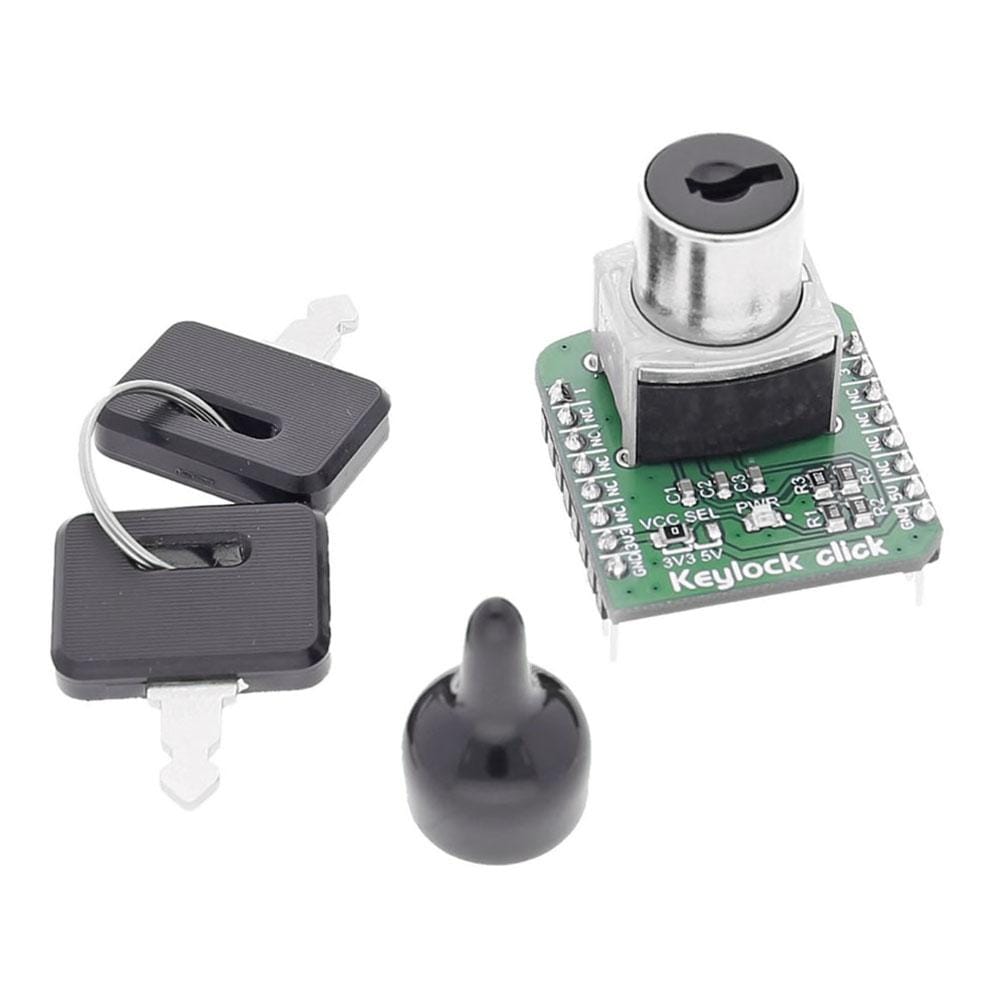
Overview
The Keylock Click Board™ carries a processed sealed key lock mechanism that can be set in three different positions. The Click Board™ is designed to run on either 3.3V or 5V power supply. It communicates with the target microcontroller over the PWM, INT, and AN pin on the MikroBUS line.
The Keylock Click Board™ comes with two keys and a protective cap for the mechanism.
Downloads
Le Keylock Click Board™ est doté d'un mécanisme de verrouillage à clé scellé traité qui peut être réglé sur trois positions différentes. Le Click Board™ est conçu pour fonctionner sur une alimentation 3,3 V ou 5 V. Il communique avec le microcontrôleur cible via les broches PWM, INT et AN de la ligne MikroBUS.
Le Keylock Click Board™ est livré avec deux clés et un capuchon de protection pour le mécanisme.
| General Information | |
|---|---|
Part Number (SKU) |
MIKROE-2564
|
Manufacturer |
|
| Physical and Mechanical | |
Weight |
0.033 kg
|
| Other | |
Country of Origin |
|
HS Code Customs Tariff code
|
|
EAN |
8606018711444
|
Warranty |
|
Frequently Asked Questions
Have a Question?
Be the first to ask a question about this.





